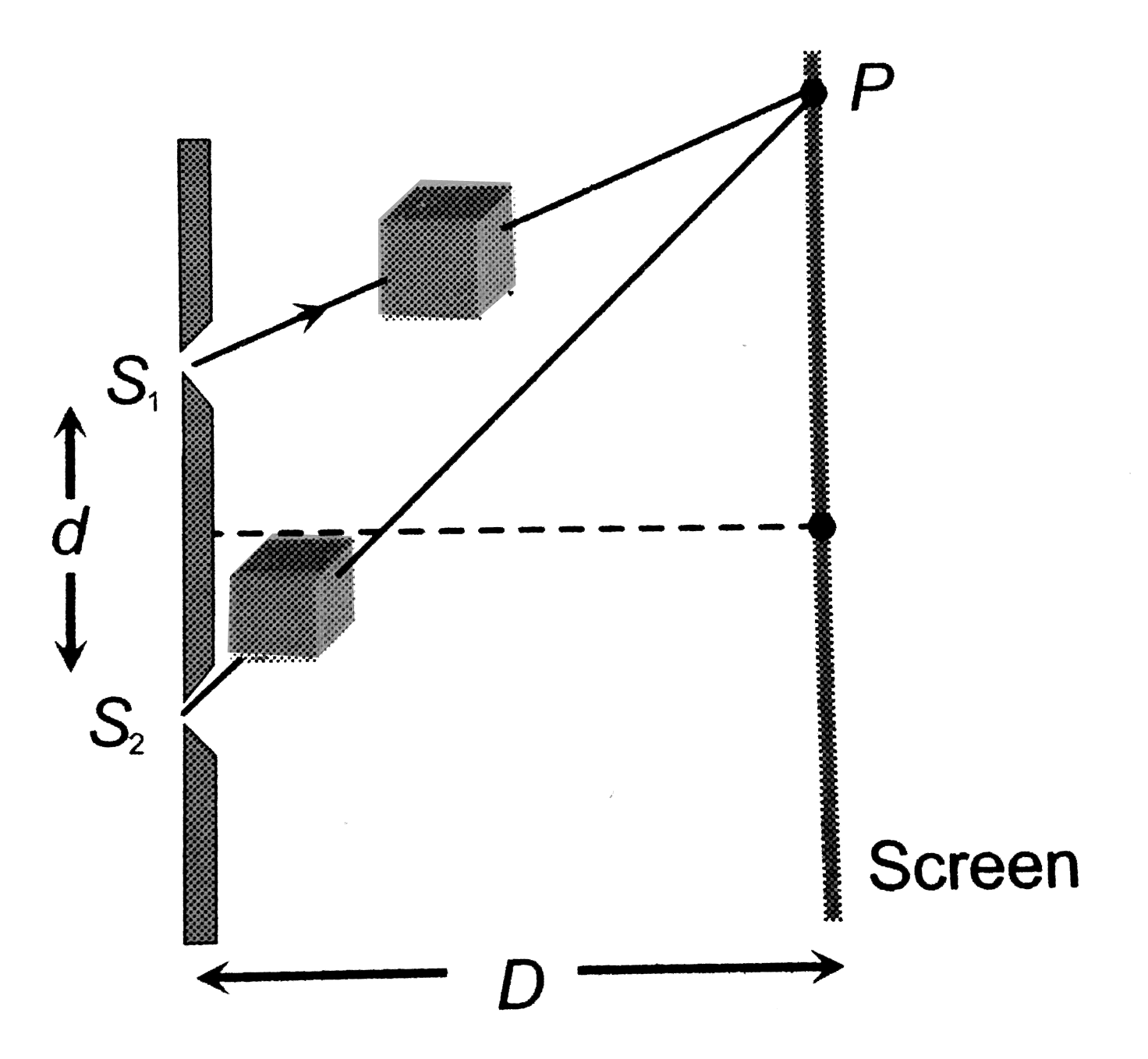In double slit experiment fringes are obtained using light of wavelength 4800Å One slit is covered with a thin glass film of refractive index. 1.4 and another slit is covered by a film of same thickness but refractive index 1.7. By doing so, the central fringe is shifted to fifth bright fringe in the original pattern. The thickness of glass film is
(a) 8μm
(b) 6μm
(c) 4μm
(d) 10μm
The correct Answer is:A
Shift Δx=βλ(μ−1)t

Shift due to one plate Δx1=βλ(μ1−1)
Shift due to another path Δx2=βλ(μ2−1)t
Net shift Δx=Δx2−Δx1=βλ(μ2−μ1)t ...(i)
Also it is given that x=5β ...(ii)
Hence 5β=βλ(μ1−μ2)t
⇒t=5λ(μ1−μ2)=5×4800×10−10(1.7−1.4)
Topper's Solved these Questions
- WAVE OPTICSBOOK - A2ZCHAPTER - WAVE OPTICSEXERCISE - Section B - Assertion Reasoning
23 Videos
- WAVE OPTICSBOOK - A2ZCHAPTER - WAVE OPTICSEXERCISE - AIPMT/NEET Questions
22 Videos
- WAVE OPTICSBOOK - A2ZCHAPTER - WAVE OPTICSEXERCISE - Polarisation Of Light
37 Videos
- SOURCE AND EFFECT OF MAGNETIC FIELDBOOK - A2ZCHAPTER - SOURCE AND EFFECT OF MAGNETIC FIELDEXERCISE - Section D - Chapter End Test
30 Videos
Similar Questions
In a double-slit experiment, fringes are produced using light of wavelength 4800A∘. One slit is covered by a thin plate of glass of refractive index 1.4 and the other slit by another plate of glass of double thickness and of refractive index 1.7. On doing so, the central bright fringe shifts to a position originally occupied by the fifth bright fringe from the centre. find the thickness of the glass plates.
View SolutionOne slit of a double slits experiment is covered by a thin glass plate of refractive index1.4and the other by a thin glass plate of refractive index1.7 .The point on the screen ,where central bright fringe was formed before the introduction of the glass sheets,is now occupied by the 15thbright fringe.Assuming that both the glass plates have same thickness and wavelength of light used in 4800Å ,find the their thickness.
View Solution
Knowledge Check
A double slit experiment is performed with light of wavelength 500 nm A thin film of thickness 2 μm and refractive index 1.5 is introduced in the path of the upper beam the location of the central maximum will
Aremain unshiftedBshift downward by nearly two fringesCshift upward by nearly two fringesDshift downward by its fringesA double slit experiment is performed with light of wavelength 500 nm A thin film of thickness 2 μm and refractive index 1.5 is introduced in the path of the upper beam the location of the central maximum will
Aremain unshiftedBshift downward by nearly two fringesCshift upward by nearly two fringesDshift downward by its fringesA double slit experiment is performed with light of wavelength 500nm. A thin film of thickness 2μm and refractive index 1.5 is introduced in the path of the upper beam. The location of the central maximum will
A(a) Remain unshiftedB(b) Shift downward by nearly two fringesC(c) Shift upward by nearly two fringesD(d) Shift downward by 10 fringes
In Young's experiment , the fringe width of the fringes with light of wavelength 6000 Å is 2.0 mm . What will be the fringe width if the entire apparatus is immersed in a liquid of refractive index 1.33 ?
View SolutionMonichromatic lightof wavelenght 600 nm is used ina Young's double slilt experient. One of the slits is covered by a transparent sheet of thicknes 1.8×10−5 m made of a material of refractive index 1.6. How many fringe will shift due to the introduction of the sheet?
View SolutionLight of wavelength 6000Å is reflected at nearly normal incidence from a soap films of refractive index 1.4 The least thickness of the fringe then will appear black is
View SolutionA light of wavelength 6000Å shines on two narrow slits separeted by a distance 1.0 mm and illuminates a screen at a distance 1.5 m away. When one slit is covered by a thin glass plate of refractive index 1.8 and other slit by a thin glass plate of refractive index μ, the central maxima shifts by 0.1 rad. Both plates have the same thickness of 0.5 mm. The value of refractive index μ of the glass is
View SolutionMonichromatic lightof wavelenght 600 nm is used ina Young's double slilt experient. One of the slits is covered by a transparent sheet of thicknes 1.8×10−5 m made of a material of refractive index 1.6. How many fringe will shift due to the introduction of the sheet?
View Solution
